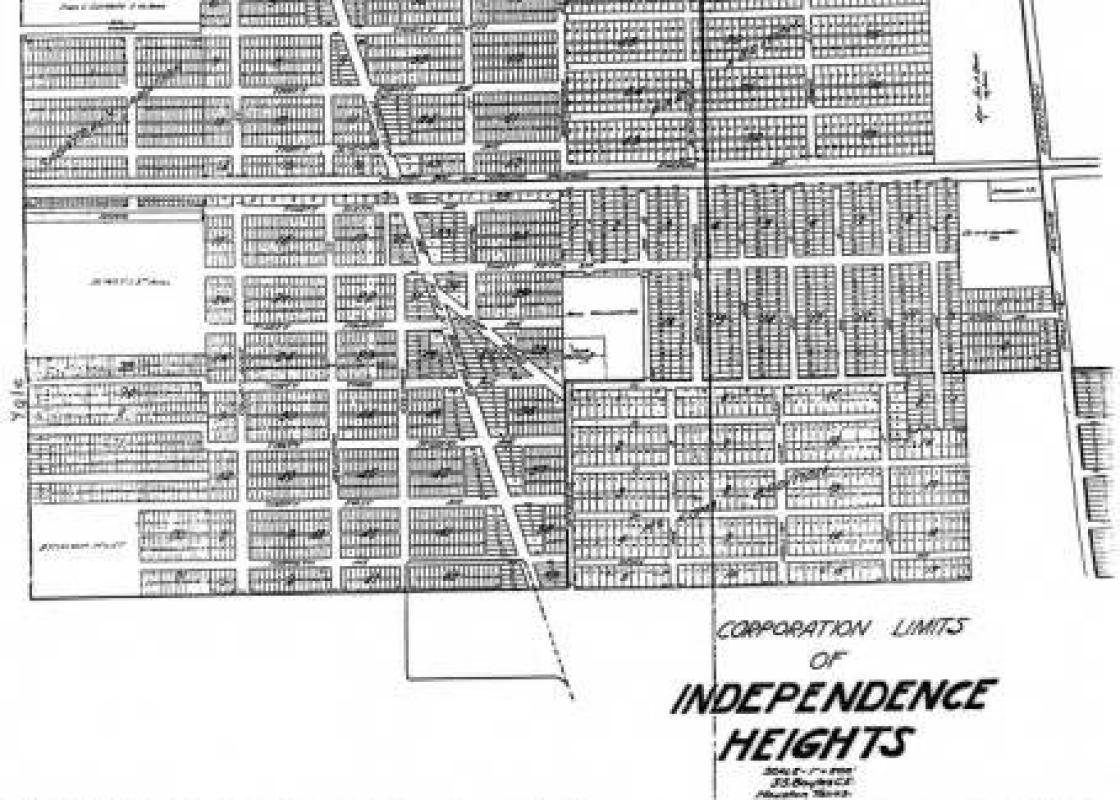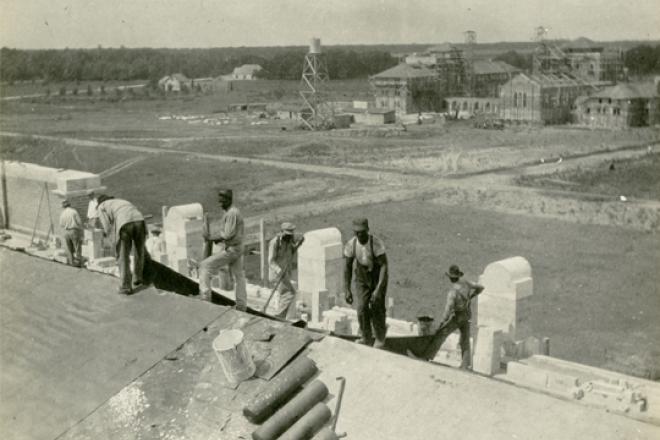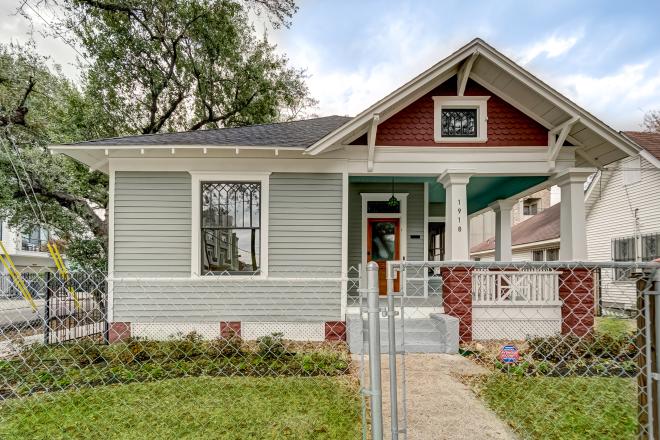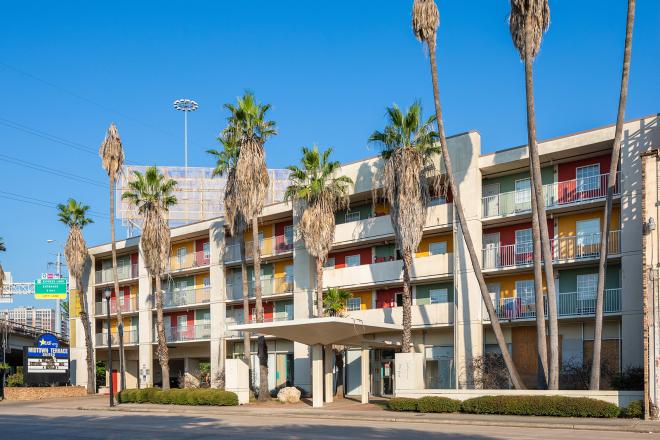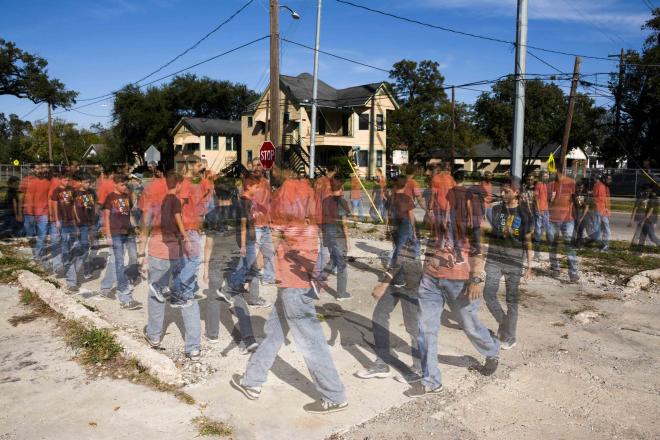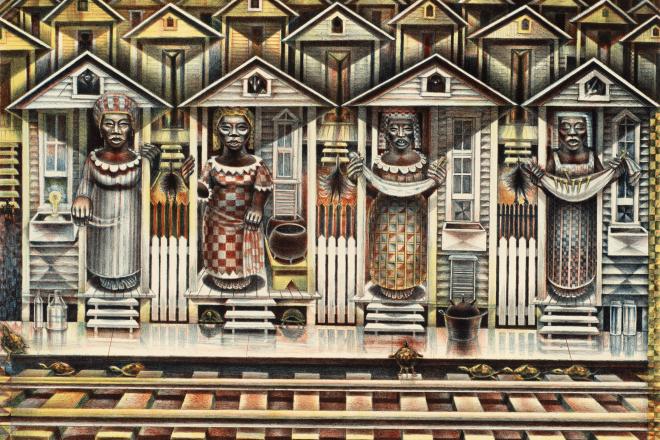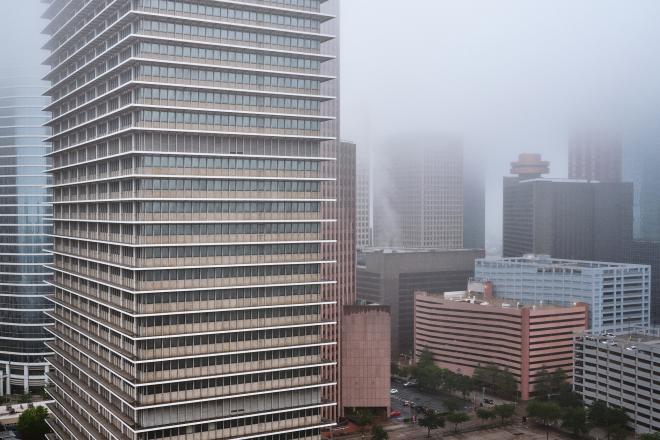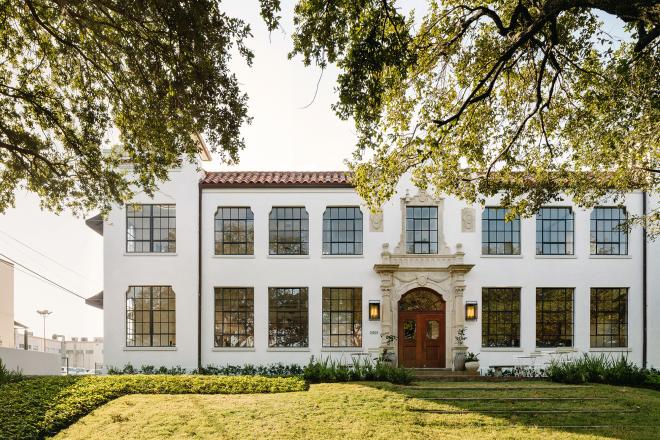Raj Mankad has served as Editor at Rice Design Alliance since 2008.
This week, Houston takes center stage in a national movement to preserve communities of color. A three-day conference will culminate November 3 with the inaugural celebration and ribbon cutting ceremony to kickoff the North Main Street Heritage Corridor Initiative in Independence Heights, where artists will draw sketches of seven planned murals that will tell the story of the first African American municipality in Texas.
“The theme of the 2018 Preserving Communities of Color Conference is Disruptive Inspiration,’” says Tanya Debose, a lead organizer of the conference, adding, “Speakers will share their stories of disruption turned inspiration and how they work at the grassroots level to preserve and revitalize their communities.”
The visibility of Independence Heights recently got a boost when Whole Foods agreed to work with the community on a mural painted on the new 365 Independence Heights store at the intersection of Yale Street and the 610 Loop. The muralist, Danny Asberry El, has family roots in the neighborhood, which was annexed by Houston in 1929. The site of the Whole Foods borders the historic Starkweather district. The seven additional murals will extend through several sites within Independence Heights. According to the 2014 designation, "Independence Heights offered working and middle class African Americans the opportunity to live in better conditions than in Houston’s wards, while maintaining access to the central city by way of streetcar, jitney, and bus." Independence Heights offered Blacks the opportunity to own land and build a better life. The Texas Department of Transportation demolished and displaced many of the buildings and families, including the home where Tanya Debose's mother was raised, when it built the 610 Loop in 1959.
In advance of the 2016 conference, Debose told Cite, “I didn’t know Independence Heights was the first African-American incorporated community in Texas until I was 40 despite having family living in the community and growing up in the church in Independence Heights.”
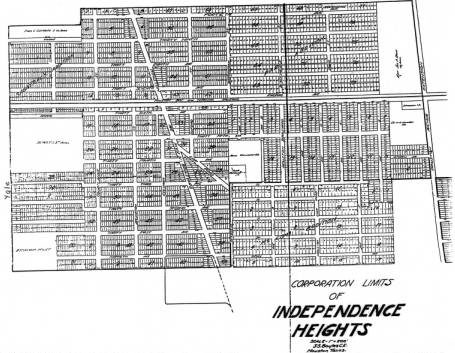 Map of corporated limits of Independence Heights. Courtesy Houston Public Library, Houston Metropolitan Research Center.
Map of corporated limits of Independence Heights. Courtesy Houston Public Library, Houston Metropolitan Research Center.
Since her late discovery of her own community’s history, Debose has become a formidable force gathering leaders from across Houston, Texas, and the Americas.
Aimee VonBokel, a Kinder Scholar at Rice University and a speaker at the conference, says, "Historic Black communities like Independence Heights are destroyed and erased all the time --- Kinloch in St. Louis in the 1990s, Weeksville in Brooklyn, New York in the 1940s, and many others --- and when they're erased from the landscape, they're erased from our understanding of the cities we call home." The 2018 Preserving Communities of Color Conference, she continues, both educates participants about this history and "brings together community leaders from all over the country — from Africatown in Seattle to the Hill Neighborhood of Pittsburgh to Zora Neal Hurston's Eatonville in Florida — to share strategies for disrupting the process of erasure."
With large numbers of people wanting to live close in, historic Black communities are ripe for investment, and displacement, because they are within easy commuting distance to jobs. VonBokel adds, "To some developers, they are blank slates waiting demolition and renewal, but to the children and grandchildren of people who built places like Independence Heights these sites offer evidence of their ancestors' determination to own land where they could raise future generations in a community deliberately set apart from the everyday indignities of racism."
The pre-conference activities include tours of Freedmen’s Town and the Buffalo Soldiers Museum. The conference program itself moves back and forth from national and local efforts. The conference begins with an international bang at Texas Southern University. Sara Zewde, a US-born urban planner working in the Rio de Janeiro office of the Institute of Transportation and Development Policy, will speak about how she disrupted plans to build luxury condos over the Valongo Wharf where at least four million enslaved Africans were trafficked into the Americas. Next, Anna Mod, a historic preservation consultant who has worked extensively in Houston and Independence Heights, will speak about using historic tax credits in community development. Then Assata Richards will share stories from the Third Ward, including her personal story and her work with the Emancipation Economic Development Council. And that is just the first half of the first day. The powerful lineup of speakers continues throughout the conference.
"Using historic tax credits can be a great way to preserve important buildings in communities of color and repurposing them to serve housing needs," says Mod, citing Jefferson Davis Hospital, now called the Elder Street Lofts, as a successful local example.
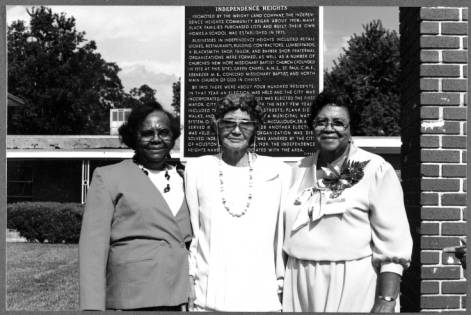 Mrs. Lota McCullough Charles, Mrs. Leona Wills, and Mrs. Vivian Hubbard Seals standing in front of a Texas Historical Commission Marker detailing the history of Independence Heights on the grounds of Greater New Hope Missionary Baptist Church. Courtesy Houston Public Library, Houston Metropolitan Research Center.
Mrs. Lota McCullough Charles, Mrs. Leona Wills, and Mrs. Vivian Hubbard Seals standing in front of a Texas Historical Commission Marker detailing the history of Independence Heights on the grounds of Greater New Hope Missionary Baptist Church. Courtesy Houston Public Library, Houston Metropolitan Research Center.
The second day of the conference takes place at the DeLuxe Theater on Lyons Avenue in the Fifth Ward. The rehabilitated building is an appropriate one for the conference. By 2020, the Fifth Ward Community Redevelopment Council (CRC) plans to complete the designation of Lyons Avenue as an African American Cultural District and create a unified brand for it that attracts cultural tourists from within Houston and afar. VonBokel will share findings from her research on the destructive pattern of wealth extraction and its relationship to black land ownership in New York’s Weeksville community as well as her own story about growing up in St. Louis. Other speakers are organizing in Pittsburgh's Hill District, Seattle’s Africatown, Austin, Galveston, Freeport, and Hobson City, Alabama.
As noted at the beginning of this article, the conference ends in Independence Heights. The speaker lineup on the third day starts with NY Nathiri, the standard bearer and precedent setter for cultural tourism around African American heritage. Nathiri founded the Zora Neale Hurston Festival of the Arts that draws 10,000 visitors per year in Eatonville, Florida. Other speakers include Urban Historian Walter Greason from Monmouth University in New Jersey and Carol Bebelle, who established the Ashe Cultural Center in New Orleans.
As architectural historian Stephen Fox has noted, the most tragic losses of Houston’s stock of historic buildings were in Houston’s African American neighborhoods, particularly in Freedmen’s Town, though nearly all areas of Houston are at risk. This week, Chevron began the demolition of the Shelor Building. As a result, the remaining buildings and communities seem all the more precious. But “precious” is the wrong word. The conference theme of “Disruptive Inspiration” speaks to the paradox of preservation battles. In one breath organizers are looking back at history and also projecting into the future. For the African American community in particular, nostalgia for a past marked by enslavement, Jim Crow segregation, and racial terror lynching makes no sense. Fighting gentrification as an endpoint also doesn’t make sense in places burdened by decades of disinvestment, environmental injustices, and other challenges. At the same time, places like Eatonville and Independence Heights have histories of self-determination and thriving cultures. Memory and preservation are considered a first step towards innovation, and justice. After all that has been lost, it is hopeful to see Houston will be the host to a historic preservation conference hell-bent on the future.


